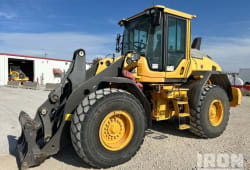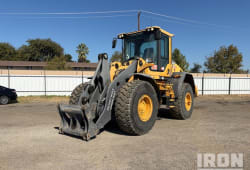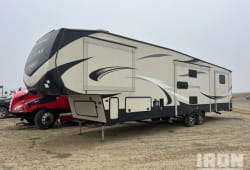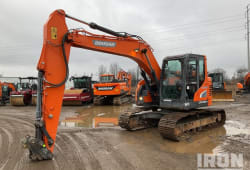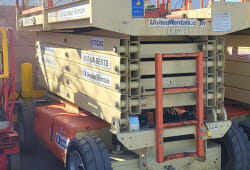Clean Room Construction for Contractors: Equipment Use, Modular Builds & Cost Guide
5 Lectura mínima
)
agosto 25, 2025
In today's high-tech world, clean room construction is no longer just for laboratory specialists-it's now a growing niche for contractors and construction crews equipped with the right tools and expertise. With the increasing demand for contamination-controlled environments in sectors like pharmaceuticals, microelectronics, and biotech, clean room construction offers lucrative opportunities-especially for those with heavy equipment experience.
This guide breaks down the essentials of clean room construction, including requirements, modular construction methods, cost considerations, and the critical role of construction equipment in building these high-performance environments.
What Is Clean Room Construction?
Clean room construction involves building specialized environments designed to limit airborne particles, contaminants, and pollutants. These rooms maintain strict cleanliness levels through advanced air filtration, pressurization, and climate control systems.
Industries That Require Clean Rooms:
Pharmaceutical and biotechnology
Semiconductor manufacturing
Aerospace and defense
Medical device manufacturing
Food processing and packaging
Unlike conventional construction, clean room builds require precision, careful material selection, and compliance with industry-specific cleanliness standards.
Basic Clean Room Construction Requirements (for Contractors)
As a contractor or project manager, you must understand the basic clean room construction requirements to successfully deliver a compliant and functional space.
Key Elements:
ISO 14644 Standards: Defines clean room classifications (ISO 5 to ISO 8), based on particle count per cubic meter.
HVAC Systems: High-Efficiency Particulate Air (HEPA) or Ultra-Low Penetration Air (ULPA) filters are essential for clean airflow.
Airlocks & Gowning Rooms: These limit contamination during entry and exit.
Sealed Surfaces: Walls, floors, and ceilings must be smooth, non-porous, and easy to clean.
Controlled Temperature & Humidity: Ensures product integrity and prevents microbial growth.
Contractor Insight: Scissor lifts, dust-controlled surface grinders, and vacuum-equipped tools are often needed to meet non-shedding and anti-static surface requirements.
Modular Clean Room Construction: A Faster, Smarter Alternative
Modular clean room construction has become the go-to choice for clients who need speed, scalability, and reduced disruption.
What Makes It Different?
Pre-fabricated Panels: Walls and ceilings arrive ready to install.
Quick Installation: Reduces labor time on-site.
Easy Expansion: Modular rooms can be reconfigured or relocated as needs change.
Equipment Role:
Forklifts move panels and HVAC units into place.
Cranes or hoists assist in placing rooftop air handling units (AHUs).
Mobile scaffolding and lifts support high-ceiling installations with minimal dust generation.
Contractor Advantage: Modular systems reduce downtime, require fewer wet trades, and minimize debris-making them ideal for operational facilities.
Clean Room Construction Costs
:format(webp))
What Affects Clean Room Construction Costs?
ISO Classification -Tighter particle control = higher cost.
Room Size -Larger cleanrooms require more filtration and materials.
HVAC & Air Handling Systems -These can account for 30-50% of total cost.
Construction Method -Modular is often cheaper and faster to install.
Average Cost Estimates:
Basic modular clean room: $200-$500 per sq. ft.
High-spec ISO 5 clean room: $800-$1,500+ per sq. ft.
Equipment rental: Additional $5,000-$20,000 depending on scope and gear needed
Tip: Cost planning should include heavy equipment rental, labor staging, and post-construction validation/commissioning.
Equipment Use in Clean Room Projects
While heavy equipment isn’t used inside operational clean rooms, it's crucial during site prep, installation, and modular assembly phases.
Commonly Used Equipment:
Excavators for foundation work (with vibration control)
Cranes for setting rooftop HVAC or filtration units
Electric scissor lifts for clean indoor installs
Dust-free grinders and polishers for epoxy or ESD flooring
HEPA-filtered vacuums for fine particle control during install
Best Practices:
Use sealed or easily sanitized equipment indoors
Maintain separate zones for clean vs dirty operations
Schedule heavy-duty work before sealing and validation
Compliance & Certification Checklist for Contractors
As a contractor, you're expected to build according to industry-specific clean room standards. Here’s what to prepare for:
ISO 14644 Part 1 & 2 compliance
FDA/GMP documentation for pharmaceutical or medical clients
Validation support: Provide as-built drawings, HVAC reports, and airflow testing results
Commissioning: Ensure performance before handover
Pro Tip: Some projects require construction teams to be trained in cleanroom protocols or wear protective gear on-site.
Choosing Vendors and Clean Room Specialists
Clean room builds involve tight collaboration between general contractors, HVAC vendors, electrical teams, and clean room system suppliers.
How to Choose the Right Partners:
Look for experience in ISO-class clean room projects
Ask for case studies or referrals
Choose vendors familiar with modular systems and integration
Conclusion: Why Clean Room Construction Is a Strategic Opportunity
The rise of clean room construction opens up high-value project opportunities for contractors ready to upskill and adapt. With proper knowledge of clean room requirements, smart use of heavy equipment, and familiarity with modular clean room construction, you can offer clients fast, compliant, and scalable solutions.
Whether you're retrofitting a lab or building a pharmaceutical plant from scratch, clean room construction represents a growing, profitable niche in the construction world-and one where precision and equipment knowledge can truly set you apart.
FAQs
Can heavy equipment be used inside clean rooms?
Not during operation-but yes, during construction. It must be sanitized, low-emission, and operated carefully to avoid contamination.
What’s the benefit of modular clean room construction?
Faster build times, lower disruption, and easier expansion-perfect for growing facilities or fast-track schedules.
How do I estimate clean room construction costs?
Factor in ISO level, size, HVAC systems, modular vs traditional method, and specialized labor/equipment needs.

